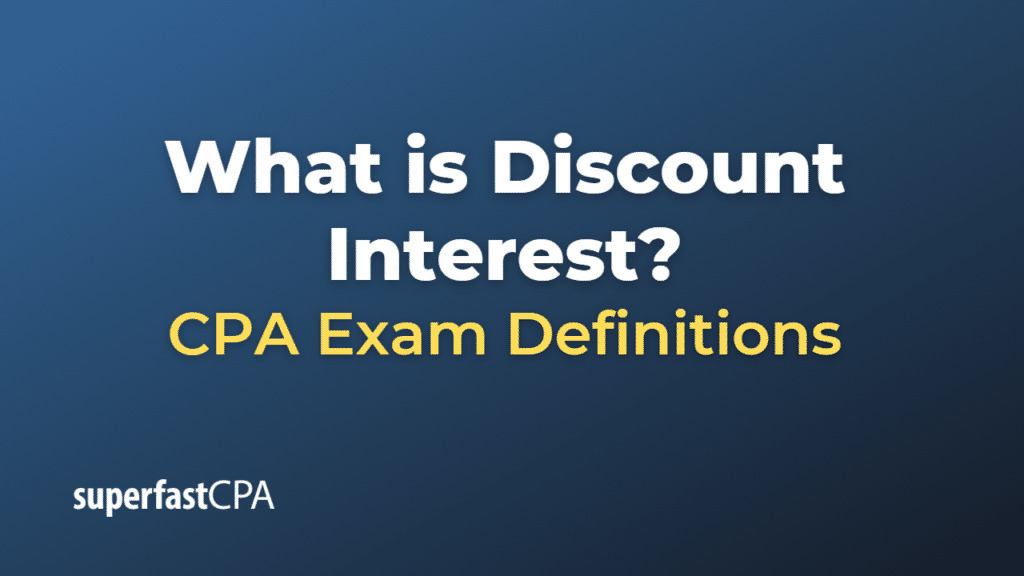Discount Interest
Discount interest, also known as “discount rate” or “bank discount rate,” is a type of interest that is deducted from a loan or a bond at the time it is issued or when it is given to the borrower, rather than being paid back at the end or over the course of the loan period.
This is often used in the case of short-term loans, such as Treasury bills, which are sold at a discount to their face value and don’t pay periodic interest. The difference between the purchase price and the face value is effectively the interest earned on the loan or bond.
For example, if a $10,000, 90-day loan is issued at a discount rate of 5% per annum, the lender deducts the interest ($125) up front, and the borrower receives $9,875. However, the borrower still has to repay the full face value of $10,000 at the end of the 90-day period.
It’s important to note that discount interest is calculated on the face value (or nominal value) of the loan or bond, not on the amount the borrower receives after the discount is deducted.
This method of interest calculation can lead to a higher effective interest rate than if the interest was deducted periodically or at the end of the loan term, especially for longer loan periods. Therefore, borrowers should take this into account when considering a loan with a discount interest structure.
Example of Discount Interest
Let’s take an example of a discount interest loan:
Imagine a business needs to borrow $10,000 for a 1-year period and the bank offers a loan with a discount rate of 6% per annum.
Under the discount interest method, the bank would calculate the interest for the year as 6% of $10,000, which equals $600.
Instead of giving the business the full $10,000 and then collecting the $600 interest at the end of the year, the bank deducts the $600 interest upfront. So, the business receives only $9,400 ($10,000 – $600).
However, the business is still obligated to repay the full face value of the loan, which is $10,000, at the end of the year.
The key point to understand here is that, although the nominal interest rate is 6%, the effective interest rate is actually higher, because the business only received $9,400 but must repay $10,000. In this case, the effective interest rate would be approximately 6.38% ($600 interest / $9,400 loan proceeds). This difference between nominal and effective interest rates is something borrowers should be aware of when considering a loan with a discount interest structure.













